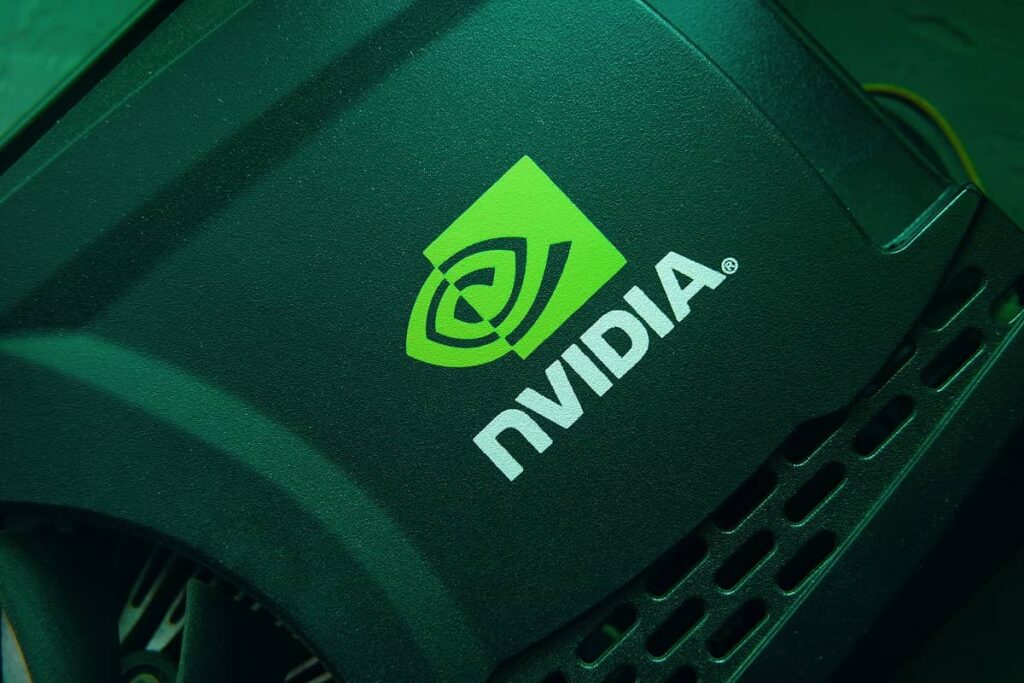Why We’re Selling NVIDIA Shares After the Split
Table of contents

Don’t study finance if you’re the sort of person who detests boredom. Some of the topics are absolutely dreadful, not to mention the teachers. They’ll make you do things like manually calculate the variance of a portfolio, something that sounds about as fun as it looks.

If you’re a glutton for punishment, do a Master’s in Finance, during which you will learn a handful of useful things based on studies that someone spent too much time on. For example, stocks typically outperform the broader market from the time they announce a split until shares start trading at split-adjusted prices. NVIDIA (NVDA) has been no exception to that rule, with shares soaring since the announcement of their planned share split.
The NVIDIA Stock Split
On May 21, 2021, at 9:00 AM Eastern Time, NVIDIA announced their stock split. (If you’re the sort of person who thinks that a $10 stock is “cheaper” than a $100 stock, here’s a refresher on stock splits.) The terms of the split were simply as follows:
Each NVIDIA stockholder of record at the close of business on June 21, 2021, will receive a dividend of three additional shares of common stock for every share held on the record date, to be distributed after the close of trading on July 19, 2021.
The day the split was announced, shares closed at $149.92. Today, shares are trading at (sneaks peek at market) $194.60 a share. Here’s how you would have fared on the trade:
- NVIDIA +29.8%
- NASDAQ (QQQ) +10.57%
By holding NVIDIA from when the split was announced until today (the day after the stock split took effect), you would have realized some seriously delicious alpha. Of course, they’re only paper gains until you sell.
Selling NVIDIA Shares
When you’re managing a portfolio of stocks, you need to set some rules to ensure proper diversification (it’s related to that portfolio variance thing we discussed earlier). In other words, you don’t want to put too many eggs in one basket. When a stock in your portfolio soars to the moon, oftentimes it will become too big a portion of your entire portfolio. What do we consider “too big?” Well, most portfolio managers might say that in a 30-stock portfolio, anything with a weighting of more than 10% would be considered “too big” at which time you would then start to slowly trim (sell shares of) the position. As of today, NVIDIA is the largest position in our portfolio at over 13%, so we’re trimming it now that the merger has gone through.
The title of our article is total clickbait, because clickbait works, and because it’s true. We are selling NVIDIA shares, but we’re not selling all our NVIDIA shares, only enough to bring our position weighting back down to around 10%. This brings up a much more interesting question. At what point do we consider a disruptive tech stock to be past its time?
When to Exit a Tech Winner?
One of the reasons our portfolio has performed remarkably well over the past 20 years is that we got very lucky. (Over 95% of money managers who tell you they can generate alpha over the long term using skill are downright liars.) Part of our luck involved buying shares of Google shortly after their IPO. When the firm started hiring activists who began disrupting the company in any way they could, we knew their time was up. Until Google’s CEO grows a pair and stops letting obnoxious employees sabotage his operation, they won’t be able to fix these problems. So, we sold our shares and moved on.
Not every sell decision is clear-cut. Getting back to NVIDIA, they went from game graphics card manufacturer to the world’s largest semiconductor company over the past decade. With a market cap of $483 billion, just how much more room do they have to run? Should we now realize our +836% return on our entire NVIDIA position and deploy that capital somewhere else? That all depends on whether or not NVIDIA can continue growing.
NVIDIA’s Growth Potential
The bigger a company becomes, the harder it is to grow – unless you’re Microsoft (MSFT). With a market cap of over $2 trillion, they’re 4X the size of NVIDIA, and still showing the world that you can be incredibly large while still achieving double-digit revenue growth.

Compared to Microsoft, NVIDIA’s growth is better, but you’re also paying a price for that.

Here’s how both companies compare using our simple valuation ratio:
- Microsoft (2,000 / 166.84) = 12
- NVIDIA (483 / 22.64) = 21
This implies that investors have much higher expectations for NVIDIA’s growth going forward.
NVIDIA and the ARM Acquisition
One place NVIDIA’s growth might come from is their planned acquisition of ARM, a company we talked about in our 2017 piece on How to Invest in the Singularity – It’s Near. From that piece:
ARM Holdings, is expected to ship over 1 trillion IoT chips in the next 20 years with ARM IoT chips commanding an 80% market share.
Credit: A 30-minute talk given by Masayoshi Son, CEO and Founder of SoftBank, in 2017
Based on the vision Masayoshi-san shared with the world, ARM plans to absolutely dominate the IoT space by building all the sensors needed to create a digital twin of the world. It’s the perfect ingredient for NVIDIA to not only provide chips for data centers, but also provide the chips used to generate the data.
If the NVIDIA/ARM deal doesn’t go through, expect shares to respond accordingly, which may present a buying opportunity. The management team is likely to have a backup plan should that happen, so we’re planning to hang on to shares in either case. (The ARM deal – whether successful or not – is expected to be wrapped up before March 2022.)
NVIDIA’s Market Leadership
When we first went long NVIDIA, we couldn’t help but think we were investing too heavily in gaming and not enough in artificial intelligence (AI) chips. Over the past five years, that concern has largely diminished. Just look at this remarkable chart from their latest investor deck.

Another concern we’ve had surrounds all the companies that are bringing AI chips to market that might steal NVIDIA’s thunder. It’s something we wrote about in last year’s piece titled Do These 5 AI Chip Startups Pose a Threat to Nvidia?
When it comes to data center chips, NVIDIA absolutely owns the space. A great piece by Wired last month put out this startling fact.
In 2019, NVIDIA GPUs were deployed in 97.4 per cent of AI accelerator instances – hardware used to boost processing speeds – at the top four cloud providers: AWS, Google, Alibaba and Azure.
Credit: Wired
Add to that NVIDIA’s chips are found in 70% of the world’s supercomputers (the fifth fastest is actually NVIDIA’s), and it’s easy to see how they’ve become the largest semiconductor company in the world.
We’ve talked before about how important it is to own market leaders because research shows, they outperform in the long run. Sure, lots of companies are building AI chips, but all signs point to NVIDIA having a dominant position where they can kick the tires of any technology until they deem it fit to add to their portfolio, then swoop in and acquire it. They bid $40 billion for ARM, so they’re not afraid to make big moves. The $12.7 billion in cash on their books (offset by $7 billion in debt) affords them room to make smaller acquisitions as well.
Conclusion
At some point in time during a company’s growth, focus changes from revenue growth to maximizing profits. At this time a company might start paying out larger dividends because giving money back to shareholders is a better option than reinvesting it back into the business. The tree is mature, so it’s time to harvest the fruit. Eventually, companies like these end up in our dividend growth portfolio, but NVIDIA isn’t going there anytime soon. They’ll remain in our tech stock portfolio until that growth potential stops, just not at a weighting that exceeds 10%.
Sign up to our newsletter to get more of our great research delivered straight to your inbox!
Nanalyze Weekly includes useful insights written by our team of underpaid MBAs, research on new disruptive technology stocks flying under the radar, and summaries of our recent research. Always 100% free.














I’ve held on to all my NVDA shares since 2008. If I had rebalanced anytime during that 13 year period, what other investment would have matched my now stellar returns and even more important, would I have the foresight to pick it? Doubtful.
We think about that as well, but managing a portfolio with a risk averse approach demands that rules are set to trim runners. If the market tanks tomorrow and takes all of tech with it, it’s good to have some dry powder. Great job capturing some serious alpha!